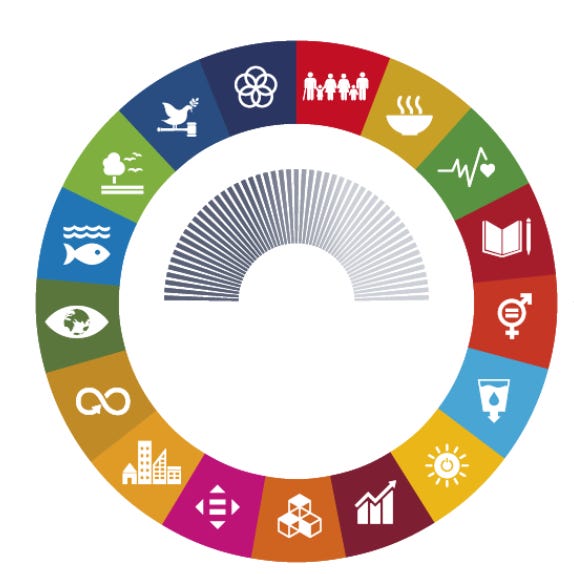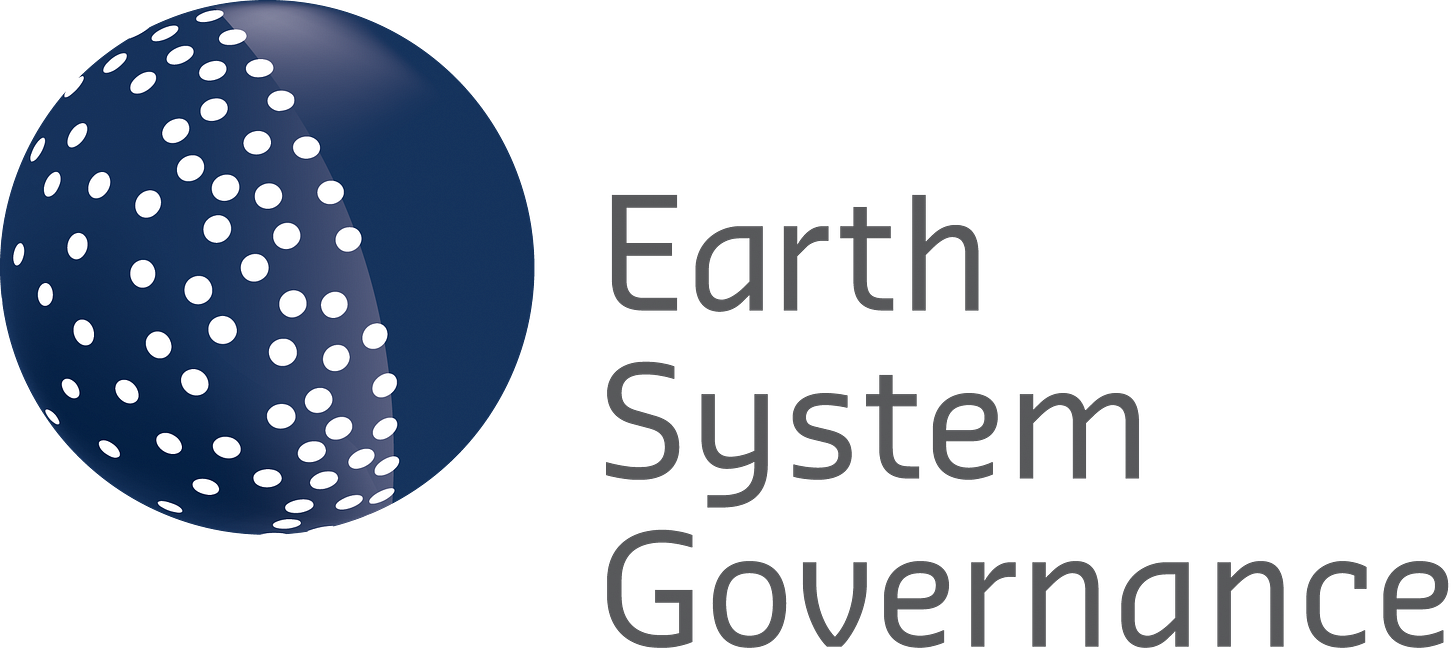Deep System Change for Sustainable Development (Earth System Governance Student Blog)
A synthesis reflection on the importance of systems thinking
Author Bio: Anna Devenish is a postdoc in the Technology, Innovation & Society group at Eindhoven University of Technology working on system dynamics of just energy transitions. Email: a.devenish@tue.nl.
Progress toward the Sustainable Development Goals (SDGs)?
The SDG Summit held in New York in September 2023 signaled the start of a new phase of accelerated actions for achieving the 2030 Agenda for Sustainable Development.The session ‘Deep system change for sustainable development: The 2030PLUS Project’ – a joint initiative of researchers at the Centre for Development and Environment, the International Institute for Sustainable Development, and the Stockholm Environment Institute – set a goal to brainstorm ideas for how to accelerate the advancement of the SDGs and what system changes are necessary to accelerate sustainable transformations.
Attending the 2023 Radboud Conference on Earth System Governance, the session opened with Dr. Norman Kearney and Nina Weitz sharing the preliminary results of a survey that elicited opinions from policy, business, civil society, and academic actors on how to make progress toward global sustainability transitions. The ideas were grouped into two clusters: opportunities and risks for achieving the SDGs. The opportunity cluster included, among other things, awareness and engagement, a well-being economy, sustainable finance, respect for indigenous knowledge, good governance, and sustainable agriculture. The cluster representing risks to achieving the SDGs included, for example, ecological degradation, polarization, and pandemics. Considering the identified risks and opportunities and drawing on systems thinking, the researchers aim to develop insight into the system changes that are necessary for accelerating sustainability transitions.
Principles of systems thinking
I found the session description intriguing because I believe that the systems approach offers great potential for understanding the acceleration of sustainability transitions. Unlike the linear analytical approach that assumes one-way cause-and-effect linkages, the systems approach examines the system state and the trajectory of its development by examining the underlying feedback processes between system components.
For example, the linear analytical approach would focus on examining the effect of policies on sustainable technology adoption. The systems approach would investigate not only policies’ immediate impacts on technology adoption but also the resulting change in the political landscape, which in turn strengthens or weakens the original policy.
By providing insight into such feedback processes, can the systems approach help society reach the targets it sets for itself?
Drawing diagrams of interactions between opportunities and risks to achieving the SDGs
The session proceeded with splitting the audience was split into two groups to deliberate how the risks and opportunities might be connected with each other via feedback-based relationships. The rationale of this exercise was that it could help identify potential synergies and trade-offs in the process of working toward the SDGs. The groups had about 40 minutes to discuss and draw a diagram of the interconnections between the SDGs risks and opportunities. The groups then presented the diagrams to each other and shared their reflections.
Who defines the system?
Three things struck me the most. First, the two groups came up with completely different diagrams, working with the same list of risks and opportunities. The reason was that each group picked a different starting point. One of the groups chose gender equity, while the other group chose carbon pricing as a starting point. Another insight was that the participants had different definitions and contextual embeddedness of the same risks and opportunities. For example, some participants conceptualized governance as mostly formal procedures related to government actions, while others considered a broader definition that included things like citizen protests as part of the governance process. These conceptualization differences reflected the disciplinary affiliations of the participants. Law scholars gravitated toward the former governance definition, while political scientists leaned toward the latter one. Lastly, the exercise demonstrated that some of the opportunities for achieving the SDGs could increase the risks and reduce the effects of other opportunities for making progress toward the SDGs. For example, introducing carbon pricing could lead to polarization and negative dynamics in the political landscape around sustainable development that can stifle further adoption of climate policies.
Whose system?
Overall, the session was insightful as it showcased the importance of systems thinking. This approach allows us to grasp the interdependencies among different components within a system, leading to a better understanding of the complexity of sustainable development. A holistic approach of systems thinking helps anticipate the unintended consequences of actions within the system. As the 2030PLUS Project builds on systems thinking, it promises to develop useful insight into accelerating the advancement of the SDGs.
I was, however, left with several questions after the session. First, when people draw diagrams of the system structure and the interactions of its components, they rely on their mental models of the world, which in turn are based on values and assumptions. What implications does this have for potential biases in the resulting diagrams? The second question is about the drawing of system boundaries. How to delineate the system? What to consider part of the system and what to consider its independent context? How to choose between a parsimonious model with fewer parameters and a more complex system model? While parsimonious models offer advantages in terms of simplicity and generalizability, they might fail to fully capture the full richness of underlying system dynamics and suffer in terms of accuracy.
About the Earth System Governance Project
The Earth System Governance Project is a global, interdisciplinary research network advancing knowledge at the interface between global environmental change and governance. The project aims to explore political solutions and novel, more effective governance systems to cope with global environmental change. You can connect with this network by becoming a research fellow, joining a taskforce or working group, or publishing with one of our publication outlets.



